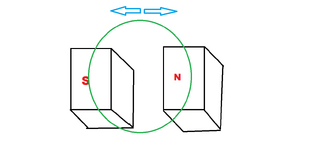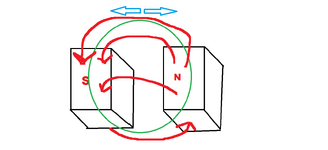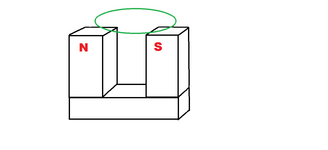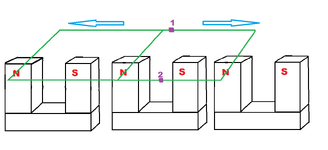Salvador12
Full Member level 4
Hey guys, can you help me out a little here,
If what I know is true then whenever you have a coil/loop within a generator or elsewhere you only get induced current in it if the B field lines are either increasing or decreasing through it.
So if I have a loop and a magnet slides past it like the rotor magnetic poles within a generator then at any given time the loop can be crossed by just one pole or to put it otherwise field lines have to be all in one direction.
What happens if I take a loop of wire and move it back and forth over a magnetic dipole such that one side of the loop cuts say N pole surface while the other is on top of the S pole, I should get no induction , no current in the loop and therefore no opposition to the movement of the loop against the magnet correct?
Please see the attached picture.
I think it is only if my loop moves further on one side or the other such that it then engulfs only one pole of the magnet with field lines going all in one direction when I start to get induced current correct?
So as long as my loop has both sides on opposing field lines there should be no induced current?
If what I know is true then whenever you have a coil/loop within a generator or elsewhere you only get induced current in it if the B field lines are either increasing or decreasing through it.
So if I have a loop and a magnet slides past it like the rotor magnetic poles within a generator then at any given time the loop can be crossed by just one pole or to put it otherwise field lines have to be all in one direction.
What happens if I take a loop of wire and move it back and forth over a magnetic dipole such that one side of the loop cuts say N pole surface while the other is on top of the S pole, I should get no induction , no current in the loop and therefore no opposition to the movement of the loop against the magnet correct?
Please see the attached picture.
I think it is only if my loop moves further on one side or the other such that it then engulfs only one pole of the magnet with field lines going all in one direction when I start to get induced current correct?
So as long as my loop has both sides on opposing field lines there should be no induced current?



